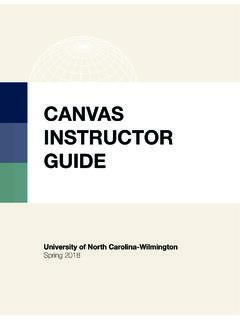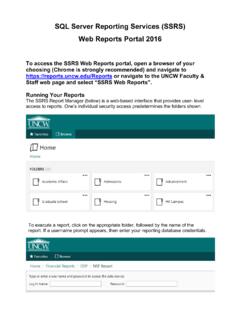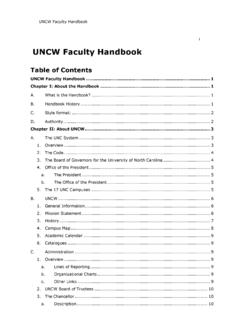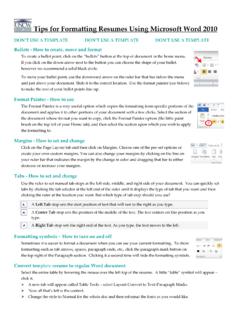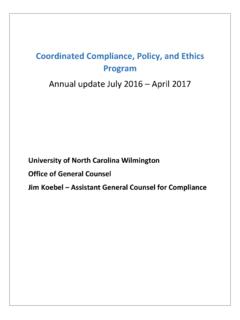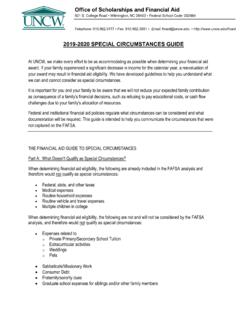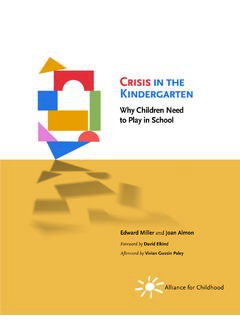Transcription of Common edTPA Glossary
1 Copyright 2014 Board of Trustees of the Leland Stanford Junior University. All rights reserved. 1 Common edTPA Glossary Academic language: Oral and written language used for academic purposes. Academic language is the means by which students develop and express content understandings. Academic language represents the language of the discipline that students need to learn and use to participate and engage in the content area in meaningful ways. There are language demands that teachers need to consider as they plan to support student learning of content. These language demands include vocabulary, language functions, syntax, and discourse. Discourse: Discourse includes the structures of written and oral language, as well as how members of the discipline talk, write, and participate in knowledge construction.
2 Discipline-specific discourse has distinctive features or ways of structuring oral or written language (text structures) that provide useful ways for the content to be o In Elementary language arts and literacy, there are structures for composing, interpreting, and comprehending expository, narrative, poetic, journalistic, and graphic print materials as well as video and live presentations. If the language function is to interpret character development, then appropriate language forms could include written essays (with particular ways of citing textual evidence) or pattern sentences, such as, The author used (action, dialogue, and/or description) to introduce (main character).
3 One example of (action, dialogue, and/or description) was _____, which suggested that the character was _____. o In Elementary Mathematics, language structures include symbolic representations such as numbers, equations, and proofs (which can be translated into words), tables and graphs (which are shorthand language for summarizing complex sets of data), and narrative ( , explanations of problem solutions). If the function is to compare, then appropriate language forms could include Venn diagrams or pattern sentences such as The _____ is longer/larger/heavier than the _____. If the function is to explain, then students might use sentence starters like First, , Then to structure the explanation, and use Finally, to signal the conclusion.
4 O In performing arts, language forms include symbolic representations such as notation, dynamics (which can be translated into words), stage and section diagrams, choreography, and narrative (analytical and evaluative critique). If the function is to compare, then appropriate language forms could include Venn diagrams or pattern sentences such as The _____ is similar to/different from the _____. If the function is to explain a procedure or technique, then students might use sentence starters like First and Then to structure the explanation, and use Finally to signal the conclusion. Students respond verbally and/or physically to symbolic and gestural language in music and dance to demonstrate understanding of these forms of language in a performing arts classroom.
5 O In physical education, language structures include symbolic representations such as officiating signals (which can be translated into words), graphic representations such as X s and O s (which is shorthand language depicting game play strategies), pictures (which represent movement forms), and Copyright 2014 Board of Trustees of the Leland Stanford Junior University. All rights reserved. 2 orienteering maps or diagrams. If the language function analyzes movement, then appropriate language structures would be a list of critical elements that describe the essential movements of the skill. o In history/social studies, language features include expository, narrative, journalistic, maps, and other graphic print materials; presentations of data in text, charts, and graphs; and video and live presentations.
6 Discourse structures can be at the sentence, paragraph, or symbolic level. If the function is to develop a document-based argument, then appropriate language features could include written essays with specified formats and pattern sentences such as The two main causes of _____ were _____ and _____. For example, the (author of) (document) stated that _____ (citation). o In English Language Arts, language structures include words, grammar and mechanics, text structures, writing processes, and genres. If the language function is to persuade, then appropriate language structures include claims, supporting evidence, and counterarguments. o In mathematics, language structures include symbolic representations, such as numbers, equations, two-column proofs (which can be translated into words), graphic representation (which is shorthand language for complex sets of data), and narrative ( , to describe or compare).
7 If the language function is to prove, then appropriate language structures include formal two-column proofs as well as informal explanations that begin with a statement of the problem and known information, followed by a series of statements such as And then, I know _____ because _____, ending with what is to be proved. o In science, language structures include symbolic representations such as chemical equations (which can be translated into words), graphic and tabular representations (which are shorthand language for complex sets of data), lists ( , materials lists), and narrative ( , analysis and conclusion sections in a lab report). If the function is to draw conclusions, then appropriate structures could include charts of investigative results or sentence starters to structure an analysis such as The result of the investigation show.
8 , This data suggests that.. o In the visual arts, if the function is to respond to a work of art, then an appropriate language form would include an essay beginning with a summary of the overall response, followed by paragraphs identifying specific elements of the work that contributed to the response, with supporting details explaining why or how they worked. For a kindergarten student, the response might consist of pattern sentences such as What catches my eye about this painting is _____ because it _____ . o In agricultural education, language structures include symbolic representations such as schematics and blueprints, graphic representation (which is shorthand language for complex sets of data), and narrative ( , to describe or compare).
9 DISCOURSE is not used in the early childhood, special education, or world language handbooks. Language demands:9 Specific ways that academic language (vocabulary, functions, discourse, syntax) is used by students to participate in learning tasks through reading, writing, listening, and/or speaking to demonstrate their disciplinary understanding. Copyright 2014 Board of Trustees of the Leland Stanford Junior University. All rights reserved. 3 Language functions: The content and language focus of the learning task, represented by the active verbs within the learning outcomes. o in elementary mathematics include describing mathematical phenomena, predicting from models and data, comparing based on Common attributes, summarizing mathematical information, recording multiple ways to solve problems, justifying conclusions, evaluating data and mathematical representations, classifying based on attributes, explaining how or why certain strategies work, drawing conclusions based on data, representing mathematical information, and so on.
10 O Common language functions in the performing arts include describing techniques or methods used in a given period or style of performance, using analysis to reproduce or reinvent performances, making comparisons based on Common attributes, summarizing information, justifying conclusions, evaluating performances, classifying based on attributes, explaining processes, drawing conclusions, and so on. o Common language functions in physical education include, but are not limited to, interpreting instructions in task cards; describing how to perform a particular movement; explaining the how and why of a movement, tactic, or strategy; signaling verbally and nonverbally to classmates about tactics during a game; interpreting data; critiquing a peer performance and listing personal health-enhancing fitness goals; and describing the purpose of opposition, contrasting player-to-player versus zone defense.
